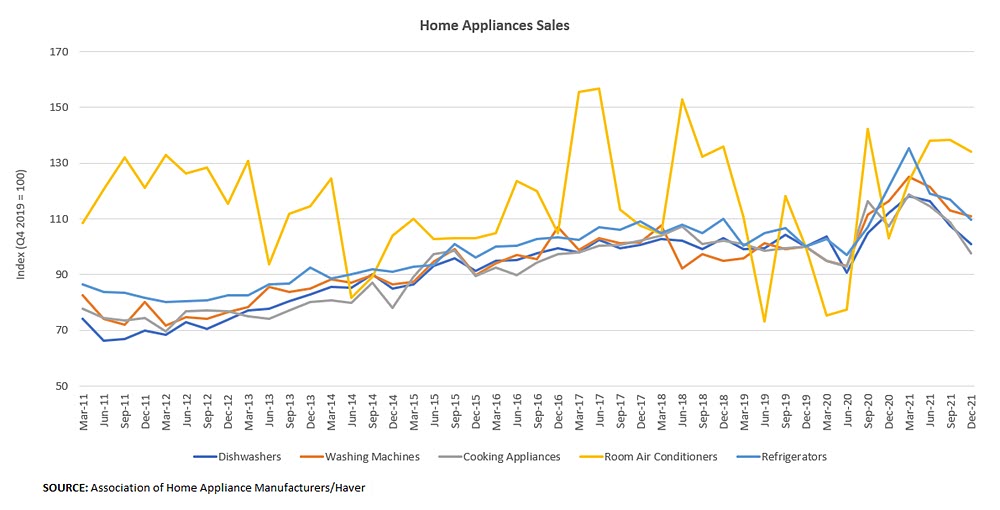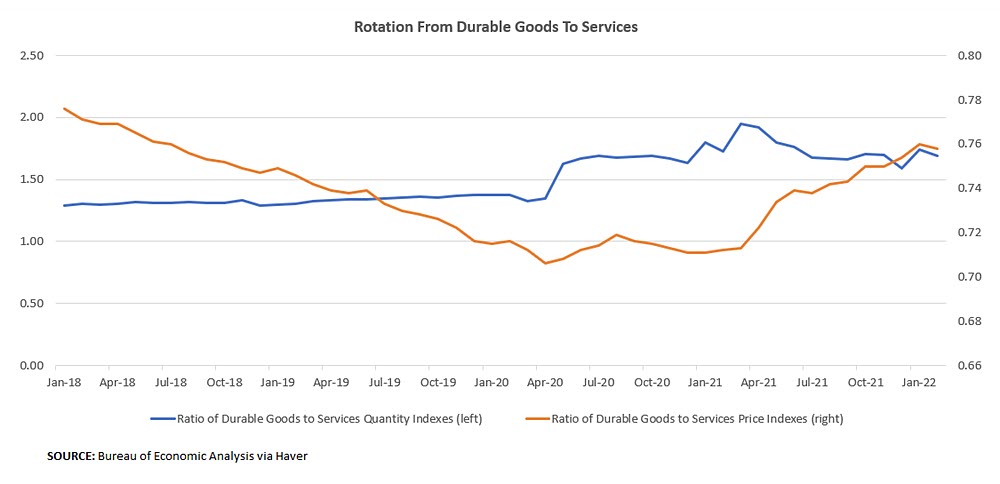Goods Riddance
Measures of durable goods consumption have been moderating in recent months as the pandemic's hold on the economy begins to dissipate. But some key questions remain: Is this due to changes in supply or demand? And how might this affect prices for consumers?
Figure 1 below shows that purchases of major home appliances — including dishwashers, washing machines and air conditioners — are now below their COVID-19 era highs.
Light vehicle sales have also fallen to a seasonally adjusted annual rate of 14.1 million, versus a COVID-19 era high of 18.3 million in April 2021. (See Figure 2 below.)
But with manufacturers hamstrung by supply bottlenecks and production problems and with retailers running low on inventory, it's not enough to look only at quantities to gauge the strength of consumer demand. Sales might have instead fallen simply because businesses are running low on products to sell and are facing difficulties restocking.
If supply constraints are the main issue, goods prices could continue to rise even as quantity sold declines. In contrast, if falling relative demand for goods is the main driver, goods prices will start to slow their increase (and some may even begin to drop) as consumers revert back to pre-COVID-19 spending patterns, while prices in the services sector will rise at a faster rate.
February's personal consumption expenditures data show a glimpse of falling demand occurring: The price level of durable goods relative to services fell for the first time since July 2021, and the quantity index of durable goods relative to services dropped by 3 percent. (See Figure 3 below.) But the data suggest that over the past year, supply issues may have been the main culprit behind the slowdown in durable goods purchases, as seen in the steady increase in the relative price of durable goods to services starting in March 2021.
Both services and goods prices continued to rise in February, a reminder that any goods-to-services spending rotation might not immediately translate into lower prices for consumers. Prices will likely adjust in a gradual and messy fashion as overall inflation returns to target.
Views expressed in this article are those of the author and not necessarily those of the Federal Reserve Bank of Richmond or the Federal Reserve System.




